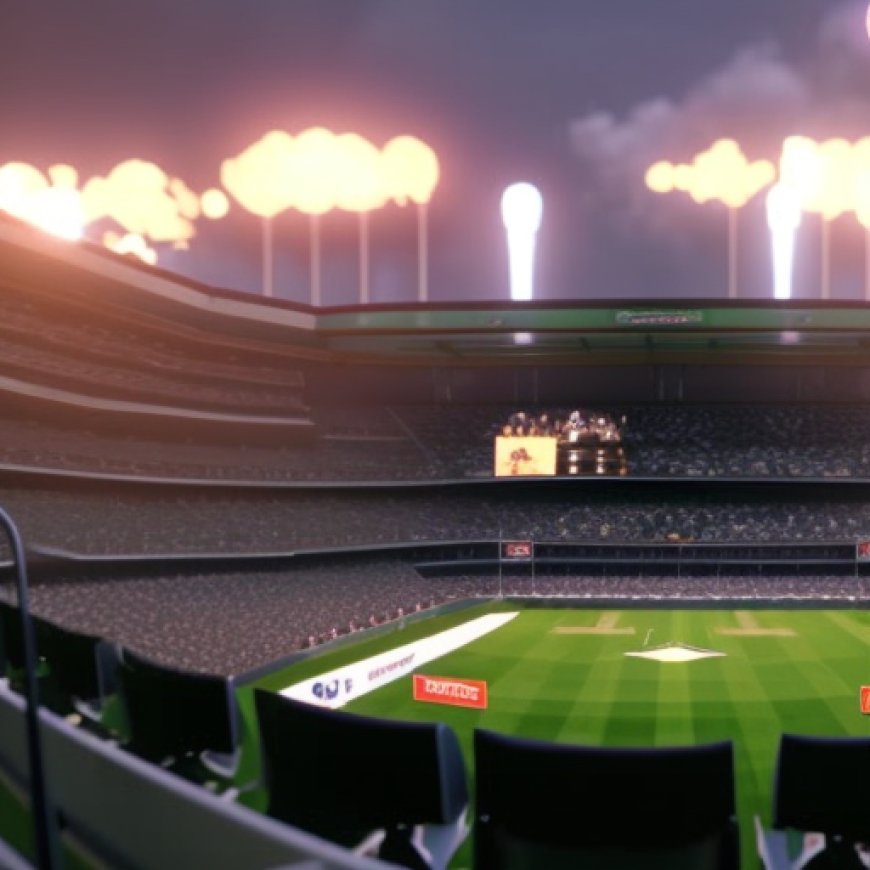‘Unhealthy’ air strikes half of the 2023 cricket World Cup venues
Cricket World Cup 2023: Polluted air the common opponent Reuters


When the Bangladeshi and Sri Lankan cricket teams, and thousands of spectators, gathered in the Indian capital New Delhi on Nov. 6 for an eight-hour-long World Cup match, they faced a common opponent – dangerously harmful air filled with high levels of fine matter that not only covered the city in a blanket of haze but can infiltrate deep into human lungs and even penetrate into the bloodstream.
Filled with thick smog, Delhi was the second most polluted city in the world on that day, behind Lahore in Pakistan, according to air quality monitoring group IQAir. It was the most polluted of the five days Delhi hosted World Cup matches this season.
Satellite imagery of Delhi’s Arun Jaitley Stadium on match days
Satellite images show the Arun Jaitley Stadium in Delhi on the days it hosted a 2023 Cricket World Cup map. The image looks very hazy on November 6. The image was captured at about 11 am, when the PM 2.5 concentration at ITO air quality monitoring station, that is the nearest station to the stadium, was 301 micrograms per cubic metre.
Air in northern India is highly polluted every year ahead of winter, when calm winds and low temperatures trap pollutants from vehicles, industries, construction dust and burning of crop residue in neighbouring fields. Fine particulate matter (PM 2.5), tiny particles with a diameter of less than 2.5 micrometres, is the most significant pollutant in Delhi.
On Nov. 6, the concentration of PM 2.5 in Delhi’s air was on average 261 micrograms per cubic metre (μg/m³). This ‘very unhealthy’ air was seven times higher than what the U.S. Environmental Protection Agency (EPA) considers good or moderate, and more than four times higher than Indian standards.
Based on the EPA’s 24-hour standards, an average concentration of PM 2.5 of more than 35.4 μg/m³ is considered ‘unhealthy’.
Daily average concentration of PM 2.5 across Delhi
Chart shows daily average concentration of PM 2.5 pollutant at each of Delhi’s 38 air quality monitoring stations between October 1 and November 14. The air pollution levels increased significantly in the first week of November, including at ITO station, which is closer to Arun Jaitley Stadium that hosted cricket World Cup matches this season. The pollution levels at many of the stations was more than 250 micrograms per cubic metre, considered to be ‘hazardous’ based on the 24-hour standards by the United States Environment Protection Agency.
The air was filled with other pollutants as well – including Nitrogen Dioxide, primarily emitted from vehicles. The World Health Organization recommends a 24-hour average of less than 25 μg/m³ of Nitrogen Dioxide. Readings shot up to as high as 258 μg/m³ on Nov. 6 at the monitoring station closest to the stadium, which is adjacent to a busy traffic junction.
Daily average concentration of Nitrogen Dioxide across Delhi
Chart shows daily average concentration of Nitrogen Dioxide pollutant at each of Delhi’s 38 air quality monitoring stations between October 1 and November 14. The levels are high at many of the stations, but the ITO station, that is closer to the Arun Jaitley Stadium that hosted the cricket World Cup matches this season, recorded the highest concentrations on most days.
Poor air quality in early November forced both the teams to cancel some training sessions, and conduct some others with face masks on. Sri Lanka coach Chandika Hathurusinghe said some players did not turn up for practice as they were asthmatic.


General view of smog inside Arun Jaitley stadium in Delhi during Bangladesh vs Sri Lanka Cricket World Cup match, November 6, 2023. REUTERS/Anushree Fadnavis
In an effort to reduce pollutants, the Indian cricket board banned fireworks in post-match celebrations, while the local government took measures including banning some diesel vehicles and construction, and using water sprinklers.
Still, several school-level sporting events in Delhi were cancelled due to the high pollution levels.
For the Nov. 6 match, air pollution levels were at their lowest ahead of the match, increasing steadily over the day – from 114 μg/m³ at 2 pm to more than 200 μg/m³ by the end of the match.
Pollutants near the stadium on Nov. 6

Join us, as fellow seekers of change, on a transformative journey at https://sdgtalks.ai/welcome, where you can become a member and actively contribute to shaping a brighter future.







